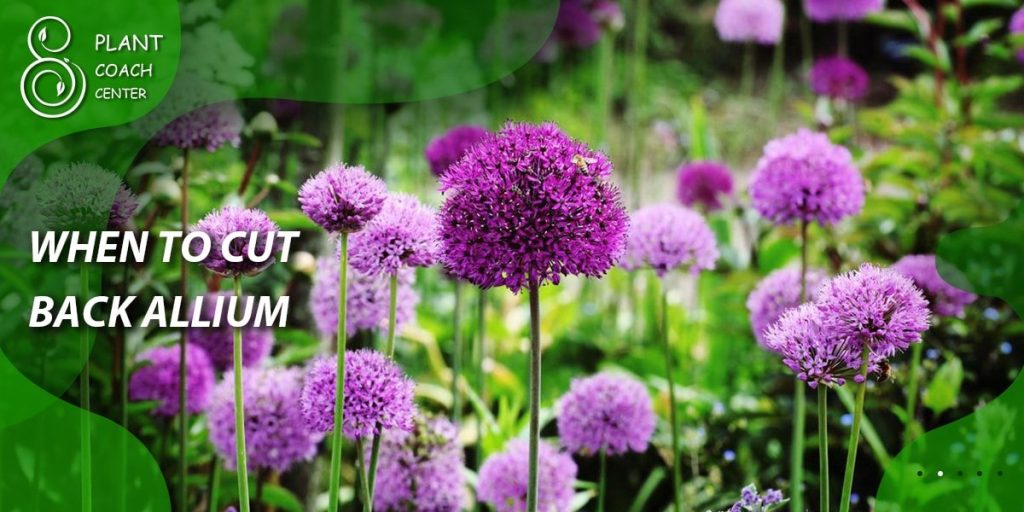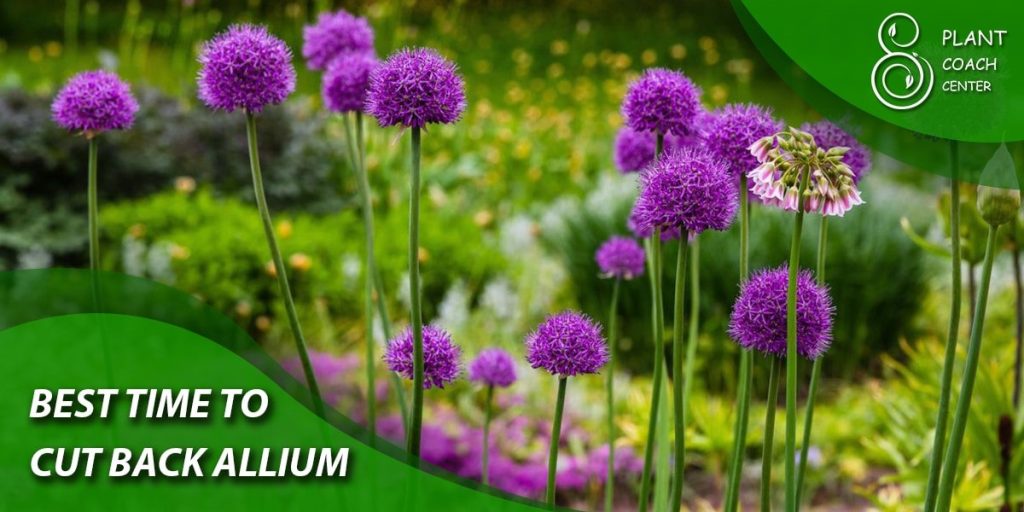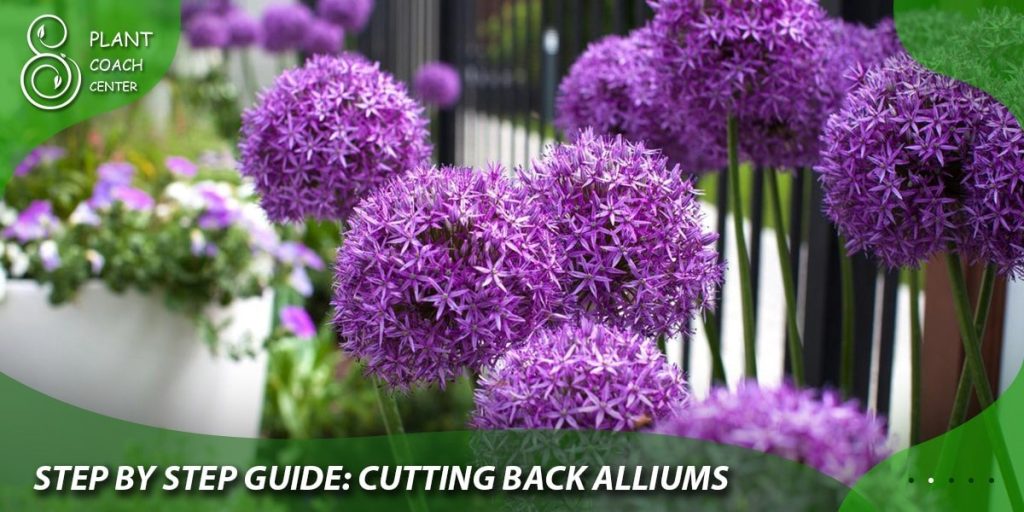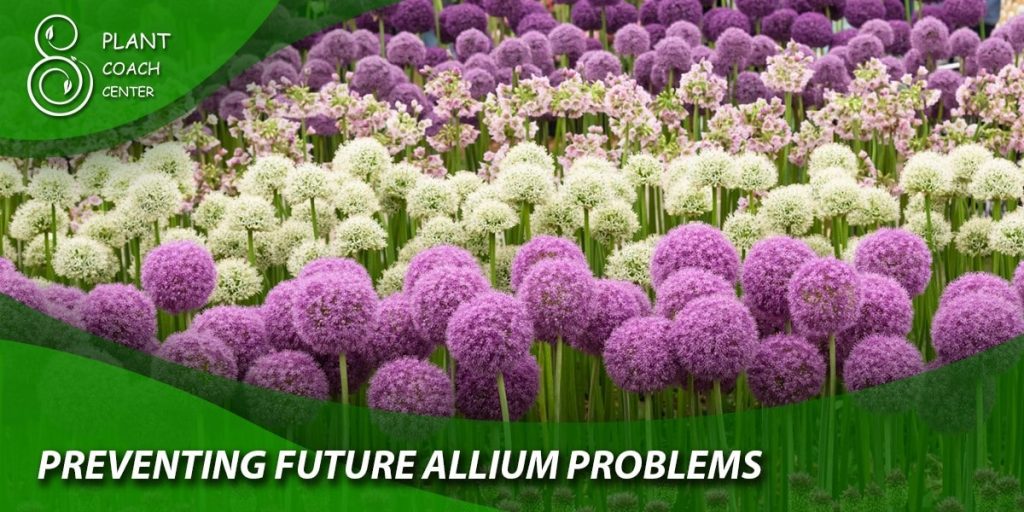Alliums, with their vibrant blooms and unique structures, are a delightful addition to any garden. From the ornate Allium giganteum to the delicate Allium schubertii, these plants offer a range of shapes and colors that can elevate the beauty of your landscape.
However, successful allium cultivation requires more than just planting and watering. This comprehensive guide will explore the world of alliums and delve into the art of plant coaching, helping you create a thriving garden with healthy, flourishing alliums.
Understanding Alliums – Characteristics and Varieties
Alliums, members of the Amaryllidaceae family, are bulbous perennial plants characterized by their star-shaped flowers. There are over 900 species of alliums, including popular varieties like Allium aflatunense, Allium cristophii, and Allium schoenoprasum (chives). Each variety brings its unique charm to the garden, making it important to know their specific growth requirements and care needs.

The Concept of Plant Coaching – Enhancing Plant Growth and Health
Plant coaching goes beyond traditional gardening practices. It involves a deeper understanding of the plants, their growth cycles, and addressing problems proactively. Instead of just reacting to issues as they arise, plant coaching takes a holistic approach to cultivate plants that thrive in their environment. By integrating this approach into allium care, gardeners can create an ecosystem where these plants can flourish and reach their full potential.
The Growth Cycle of Alliums
To effectively care for alliums, one must understand the stages of their growth cycle. It begins with planting the bulbs, which usually takes place in the fall. As winter passes, the bulbs remain dormant until spring, when they start shooting up green foliage. In early summer, the iconic spherical flowerheads emerge, creating stunning displays in the garden. After flowering, the plant focuses on seed production and eventually enters a period of dormancy in late summer or fall.
Factors Affecting Allium Growth – Light, Water, and Soil
The success of alliums heavily depends on three primary factors: light, water, and soil. Most allium varieties prefer full sun, although a few species can tolerate partial shade. Proper watering is crucial during the growing season, but well-draining soil is equally important to prevent bulbs from rotting. Understanding the balance between these elements is key to ensuring healthy and robust allium growth.
The Importance of Pruning Alliums
Pruning is an essential aspect of plant coaching that plays a significant role in allium care. Pruning involves the removal of spent flowerheads and foliage to promote plant health and encourage future blooms. Deadheading the flowers prevents the plant from putting energy into seed production, directing it instead toward strengthening the bulb for the next growing season. Trimming back the foliage after it turns yellow allows the bulb to conserve energy for its dormancy period.
Pruning Techniques for Alliums – Tools and Best Practices
When pruning alliums, using the right tools and techniques is crucial. A sharp, clean pair of pruning shears is essential to avoid crushing the stems. After the flowers fade, cut the stems back to their base, being careful not to damage the emerging foliage. When the foliage turns yellow or begins to wither, cut it back to the ground, ensuring the plant’s energy is redirected inward.
Identifying Common Allium Problems: Overcoming Garden Challenges
Despite the most dedicated efforts, alliums can encounter hurdles in the garden. Understanding the common culprits that hinder their growth is essential for successful plant coaching.
Pests: Tiny Troublemakers in the Allium Garden
- Aphids: These tiny insects feed on sap, causing curling leaves and stunted growth.
- Thrips: Scarring and discoloration of allium leaves are telltale signs of thrip infestations.
- Onion Maggots: The larvae of onion flies, these pests feast on allium roots, leading to wilting and reduced vigor.
Diseases: Fungal Foes That Threaten Alliums
- Rust: Rust-colored spots on leaves indicate a fungal attack, hampering photosynthesis and growth.
- Smut: Unsightly black growth on alliums can be a symptom of smut infection, hindering nutrient uptake.
- Fusarium Wilt: This devastating disease causes yellowing, wilting, and eventual death of allium plants.
Nutritional Deficiencies: Starving Alliums of Vital Elements
- Nitrogen Deficiency: Yellowing lower leaves and stunted growth are typical signs of nitrogen deficiency in alliums.
- Phosphorus Deficiency: Delayed flowering and poor root development are indicators of phosphorus shortage.
- Potassium Deficiency: Weak stems, brown leaf edges, and reduced flower production suggest insufficient potassium.

Diagnosing Allium Problems: The Art of Plant Health Assessment
Swift and accurate identification of allium issues is crucial in effective plant coaching. Employing keen observation and vigilant inspection will help you catch problems early on, preventing further damage.
Signs of Stress: Telltale Clues in Alliums’ Appearance
- Wilting: Drooping or sagging foliage indicates water stress or pest infestations.
- Discoloration: Yellowing or browning of leaves may point to nutrient deficiencies or diseases.
- Stunted Growth: Slow or limited growth suggests underlying issues affecting the plant’s development.
Visible Evidence: Clues Left Behind by Pests and Diseases
- Holes in Leaves: Chewed edges or perforated leaves are a clear sign of pest activity.
- Webbing: Fine silk-like webbing indicates spider mite or caterpillar presence.
- Discolored Patches: Unusual spots or patterns on leaves may indicate fungal or bacterial infections.
Regular Plant Health Assessments: Proactive Measures for Allium Well-being
- Schedule Inspections: Set aside time for routine checks on your alliums to catch potential problems early.
- Observation Notes: Maintain a gardening journal to document changes and patterns in plant health.
- Interventions: Take swift action when issues are spotted, employing organic remedies or treatments as needed.
The Best Time to Cut Back Alliums: Pruning for Prosperity
Strategic pruning is a vital aspect of allium care. Understanding the growth cycle and ideal timing for cutting back ensures the plant’s energy is directed where it’s needed most.
Deadheading Flowers: Fostering Future Blooms
- Full Bloom: Wait until allium flowers have fully bloomed, displaying their magnificent splendor.
- Pre-Seeding: Prune the flowers before they produce seeds to redirect the plant’s energy.
Trimming Foliage: Preparing for Dormancy
- Yellowing Foliage: Cut back the foliage after it turns yellow or begins to wither.
- Energy Conservation: Trimming the foliage allows the bulb to store energy for the dormant phase.
Factors Influencing the Cutting Back Process: Nature’s Hand in Pruning
While the growth cycle offers guidance, environmental factors influence the timing of pruning alliums. Gardeners must adapt to Mother Nature’s whims and assess the plant’s condition for the perfect moment to wield their shears.
Unpredictable Weather: Nature’s Curveballs
- Warm Spurts: Unseasonably warm weather may trigger early flowering, requiring adjustments to pruning schedules.
- Cold Snaps: Late frosts can delay growth, affecting the timing of foliage withering and pruning.
Gardener’s Intuition: Reading the Allium’s Signals
- Observational Skills: Keenly observe the allium’s growth and response to environmental changes.
- Flexibility: Be adaptable in pruning plans, allowing for adjustments based on the plant’s unique needs.
A well-informed and attentive gardener can navigate these challenges with ease, fostering a garden adorned with thriving alliums in a harmonious dance of nature and care.

Step-by-Step Guide: Cutting Back Alliums
To ensure successful pruning, follow a step-by-step guide when cutting back alliums:
- Deadheading Flowers:
- Wait until the allium flowers are fully bloomed but haven’t yet produced seeds.
- Use clean and sharp pruning shears to cut off the flower stems at their base.
- Trimming Foliage:
- Once the allium flowers have faded, observe the foliage for signs of yellowing or withering.
- Using the same pruning shears, cut the foliage back to the ground level.
- Post-Pruning Care:
- After pruning, apply a layer of mulch around the alliums to retain moisture and suppress weed growth.
- Continue regular watering and monitor the plants for any signs of stress or new growth.
Addressing Potential Issues During the Cutting Back Process
While pruning, you may encounter certain issues that need immediate attention. If you spot signs of pest infestations or disease, take appropriate measures to address the problem. Consider using natural pest control methods or organic fungicides to maintain a healthy and eco-friendly garden environment.
Advanced Plant Coaching Techniques for Alliums
Taking plant coaching a step further can lead to even more impressive results with your alliums:
Promoting Flowering and Seed Production:
- If your goal is to encourage prolific flowering, consider providing the alliums with extra nutrients during their growing season.
- Allow some of the flowerheads to remain on the plant after blooming to produce seeds for future propagation.
Encouraging Bulb Division and Propagation:
- Once alliums have matured and grown for a few years, you can divide the bulbs to create new plants.
- Gently dig up the bulbs, separate the offsets, and replant them in suitable locations with well-draining soil.
Overcoming Allium Pests and Diseases
Combatting allium pests and diseases requires a proactive approach:
Natural and Organic Pest Control Methods:
- Introduce beneficial insects like ladybugs and lacewings, which feed on aphids and other pests.
- Neem oil and garlic spray are natural remedies that can help repel pests.
Effective Treatments for Allium Diseases:
- Remove infected plant parts to prevent the disease from spreading.
- Apply organic fungicides, such as sulfur or copper-based solutions, following the manufacturer’s instructions.

Preventing Future Allium Problems
An ounce of prevention is worth a pound of cure. To avoid future allium problems, follow these preventive measures:
Creating a Resilient Garden Environment:
- Choose appropriate planting locations that provide sufficient sunlight and well-draining soil.
- Ensure good air circulation around the plants to minimize the risk of fungal diseases.
Proper Plant Care and Maintenance Tips:
- Regularly inspect alliums for signs of pests, diseases, or nutritional deficiencies.
- Water the plants deeply and consistently, avoiding overwatering or waterlogging.
- Apply balanced fertilizer or compost to provide essential nutrients and promote healthy growth.
Alliums in Landscaping and Garden Design
Alliums can be utilized creatively in landscaping and garden design:
Incorporating Alliums into Different Garden Styles:
- Contemporary gardens can benefit from the bold, architectural presence of tall allium varieties.
- Cottage gardens can be enhanced by the delicate and whimsical appearance of smaller alliums.
Companion Planting with Alliums – Beneficial Pairings:
- Plant alliums alongside roses to deter aphids, as the onion scent acts as a natural repellent.
- Interplanting alliums with other flowering plants can add depth and dimension to your garden beds.
Conclusion
Plant coaching is an art that requires keen observation, proactive action, and a deep connection with the plants we nurture. Throughout this comprehensive guide, we have explored the world of alliums, from their growth cycle and care needs to addressing common problems through pruning and plant coaching techniques.
Remember, gardening is a journey of learning and adaptation. As you embark on your allium-growing adventure, be patient with yourself and your plants. Embrace the joy of discovery, the satisfaction of overcoming challenges, and the beauty of watching your garden flourish. By combining knowledge, dedication, and a touch of intuition, you can create a garden where alliums stand tall and vibrant, captivating everyone who sets eyes upon their ethereal beauty.
Get started on your sustainable gardening journey with plantcoachcenter.com!
Can I leave allium bulbs in the ground during the winter?
Yes, most allium bulbs are winter-hardy and can be left in the ground during the dormant period.
How do I know if my alliums need more water?
Check the soil moisture level by inserting your finger into the soil. If it feels dry at a depth of about an inch, it’s time to water.
Can I grow alliums in containers?
Yes, many allium varieties can be grown successfully in containers. Ensure the container has proper drainage and sufficient sunlight.







